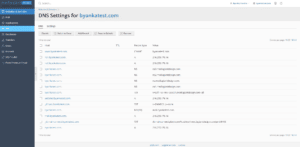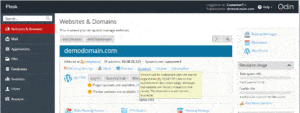DKIM “provides a method for validating a domain name identity that is associated with a message through cryptographic authentication” (www.dkim.org).
To enable DKIM signing of outgoing email, go to Websites & Domains > Mail Settings of a domain, select the Use DKIM spam protection system to sign outgoing email messages checkbox and click OK.
Note: DKIM signing will function only for domains that use the Plesk DNS server.
If you have activated DKIM for a domain, Plesk adds the following two records to the DNS zone of the domain (example.com stands for your domain name):
default._domainkey.example.com– contains the public part of the generated key._ domainkey.example.com– contains the DKIM policy. You can edit this policy.
In addition to DKIM, Plesk supports SPF and DMARC policies for outgoing mail. DMARC carries out the specified policy on how to treat email messages depending on the DKIM and SPF checking results. By default, DMARC uses general policy, and messages that did not pass checking are not deleted. You can use a stricter policy. For example, you can specify that a message must pass both SPF and DKIM checking to be accepted by the recipient mail server.
You can change SPF and DMARK policies for your domain in the domain’s DNS settings.
To set up DMARC or SPF policy for your domain:
Go to Websites & Domains > navigate to the domain > DNS Settings and edit the DNS records related to SPF or DMARC. For example, this record contains the default DMARC policy:
_dmarc.<your domain>. TXT v=DMARC1; p=none




 .
.

